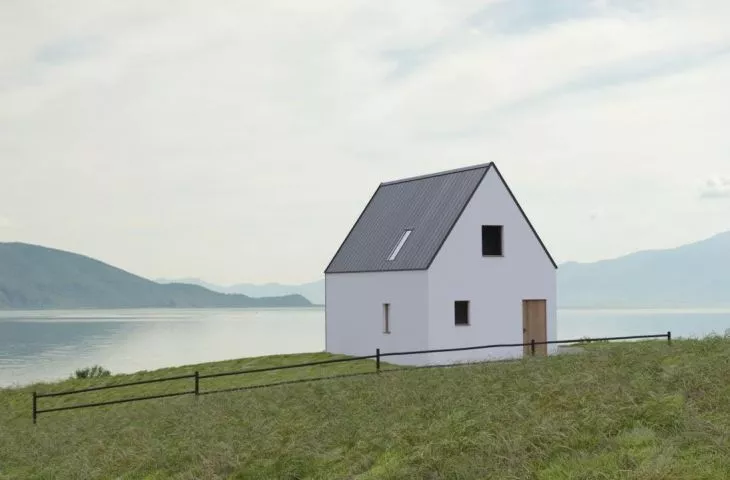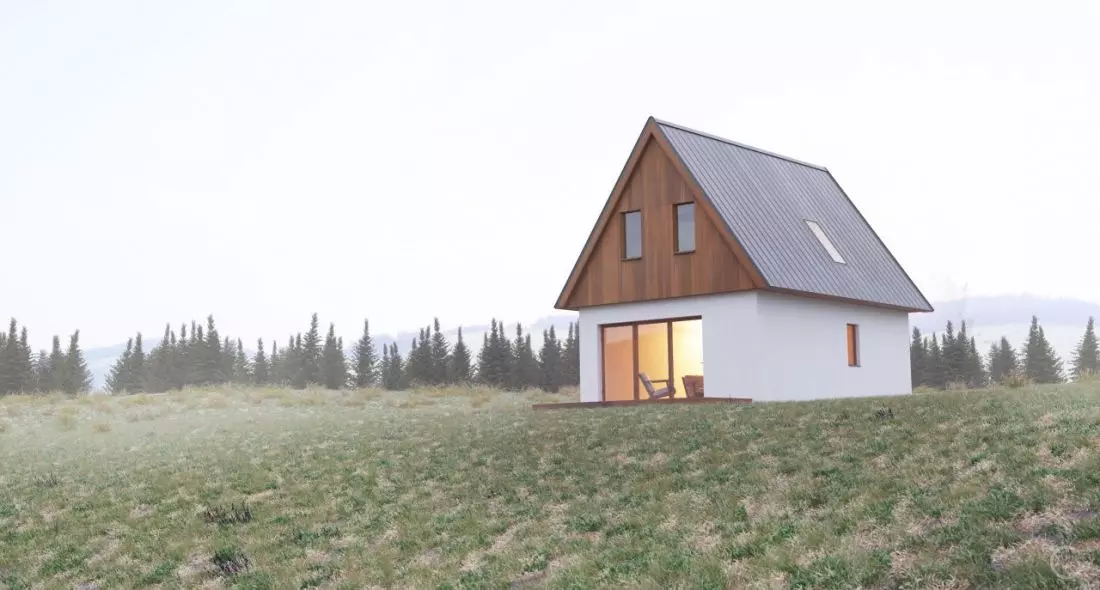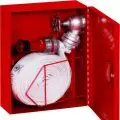TheSilesian House by {tag:pracownie}, is a project that can be made on application. The object, which is a summer house, was created in response to the growing demand for contemporary, functional and aesthetic recreational architecture. The body of the building with a simple plan, proportions and gabled roof refers to the Lower Silesian architecture.
The timber-framed recreationalbungalow is a simple, compact block with a symmetrical gable roof. The project assumes various possibilities - a modern form with a large viewing window or a traditional one referring to the wooden architecture of the Sudeten foothills.
modern version of the facade with large glazing
© Tecla
In the words of the architects from the Tecla studio:
When designing the building, we first analyzed the silhouettes and masses of the characteristic buildings of the Sudeten foothills. We looked at pre-war wooden and brick single-family houses, as well as half-timbered houses and larger farm buildings. We looked at the materials used, construction solutions, mutual correlations of dimensions and details. From this analysis emerged the silhouette of a Silesian house, the character of which is primarily determined by a simple plan and a gabled roof with the right mass and angle of inclination.
The architects then developed a plan for the bungalow and encased it in distinctive architecture. The main idea was to have a clear and functional plan, containing the entire utility program of the summer house, but at the same time not overloaded - after all, this is a summer house for an application and the program must fit into thirty-five square meters of building area.
A modern design that refers to tradition
Thebungalow is one-story with a roof structure designed in such a way that it is possible to easily adapt the attic area for additional more intimate space - a single-space mezzanine or separating bedrooms with walls. The first floor features a living room with a kitchenette, an entrance hallway and a bathroom. A large window on gives the interior breath, brightness and spaciousness.
The main idea was to have a clear and functional plan, containing the entire utility program of the summer house
© Tecla
We tried to ensure that the atmosphere of the cottage was not determined by the historicizing details, but primarily by the massing and proportions, as well as the construction and materials referring to the classic buildings, applied in a contemporary way. The concept assumes different variants of the house's facade: a modern form with a large viewing window inspired by Silesian houses without eaves, or a traditional one referring to the traditional architecture of a wooden hut in the Sudeten foothills. We also assumed the possibility of making the wall structure in the form of half-timbering (a skeleton filled with insulation and protection layers)," the architects explain.
simple assembly
The building is designed in a timber frame, frame-and-column construction. In the technical design, the authors optimized the construction - they refined the geometry of the static system, the spacing and cross-sections of the beams, the amount of wood. They adopted the "Canadian" system based on more densely spaced and thinner in cross-section columns and beams, which in this situation proved to be the most effective (light and fast, assembled on site). The architects also considered a more traditional skeletal structure - thicker and more shapely sections, columns and beams more widely spaced. This slightly more massive and robust structure can be used in traditional versions of the Silesian House.
The Silesian House can be built on application
© Tecla
We are currently working on adapting the design to the possibilities of prefabrication. We would like as many elements of the house as possible, e.g. walls, roof beams, etc., to be able to be prepared in a carpenter's workshop and brought to the construction site where only the necessary assembly will remain to be done. Optimally, a professional construction team will not be needed to assemble the house, but a few responsible people with medium-high DIY skills and good assembly instructions as for a large piece of furniture, the authors plan.
One version is planned for construction next year in the Sudetic foothills.











































